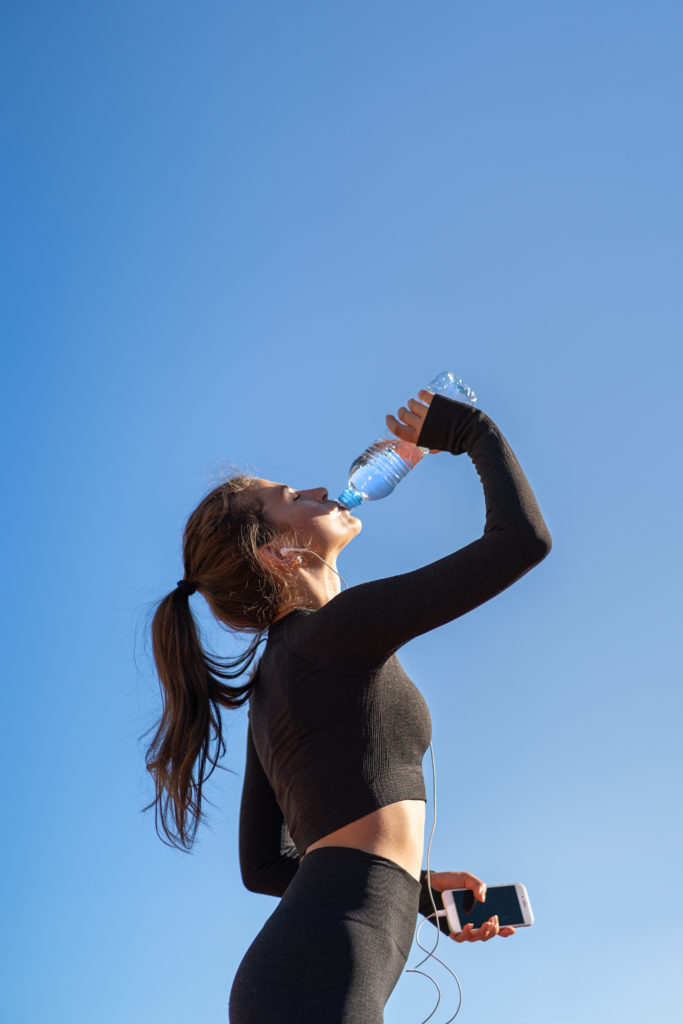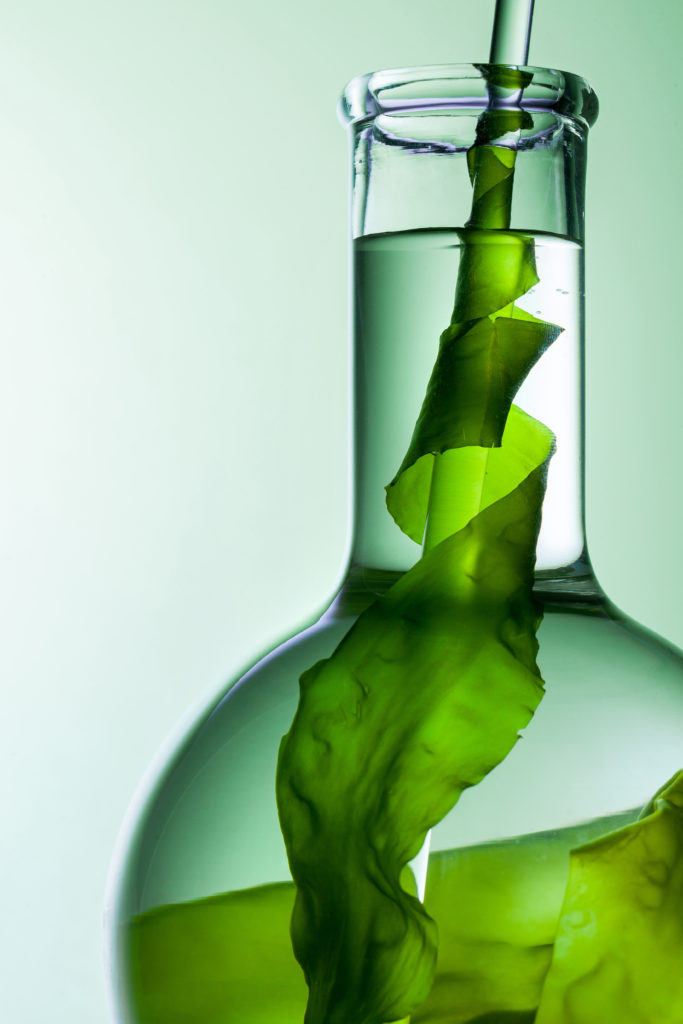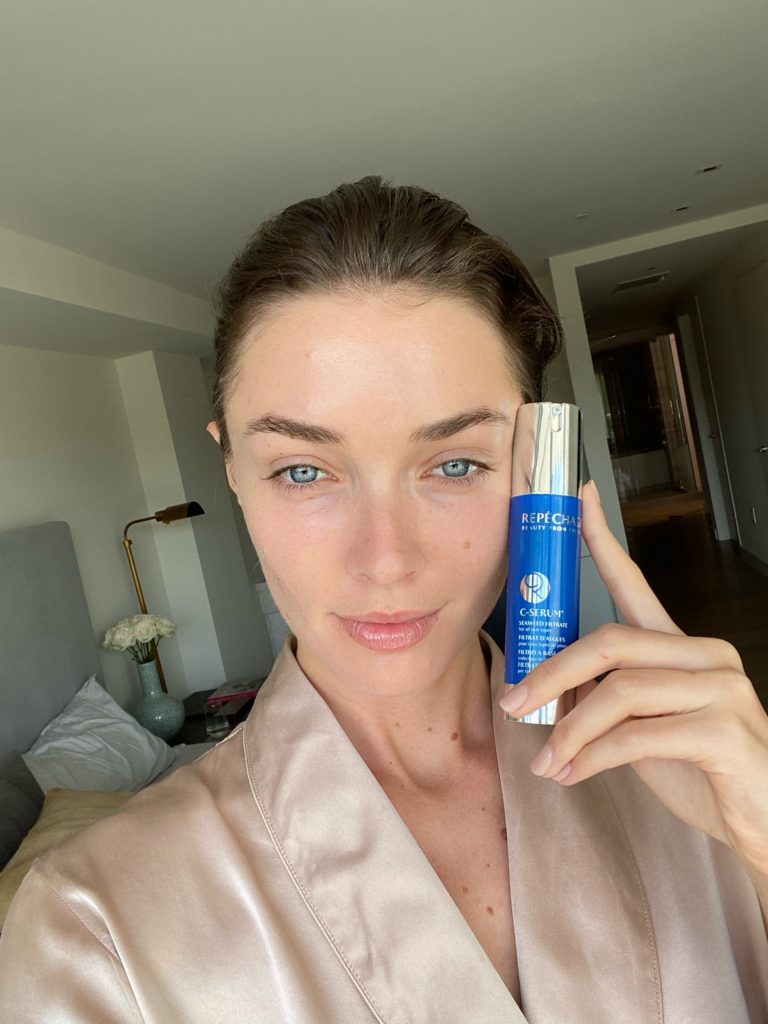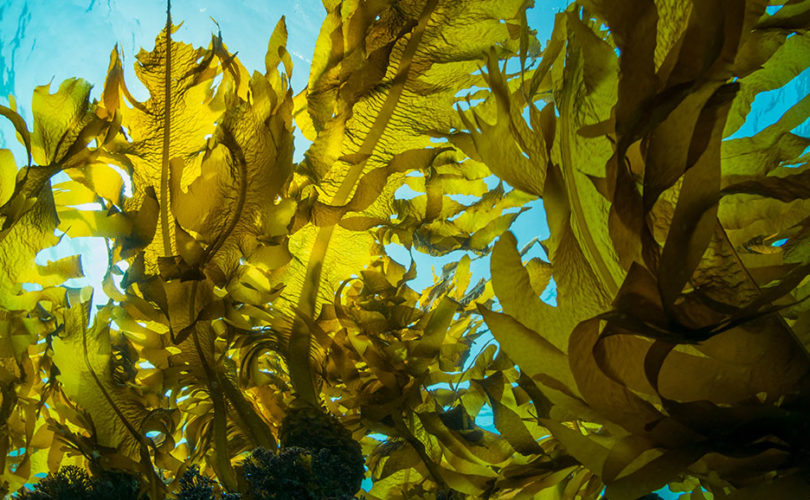Everyone is looking for ways to both enervate their bodies and skin. Like sport rehydration drinks, electrolytes are emerging as an important skin care ingredient to help to rehydrate and restore skin. Ingredients such as sustainably harvested Seaweed contain essential electrolyte minerals such as calcium, potassium, phosphorus and magnesium, as well as a multitude of beneficial elements which work together to help maintain skin’s optimal function, especially in maintaining hydration levels.
Utilizing ingredients that are rich in electrolyte activity such as Seaweed is a perfect way of energizing and updating spa menus for the summer. Here, we will look at the role electrolytes play in the skin and how to incorporate electrolyte rich ingredients such as seaweed into your services.

Not Just For Sports Drinks
Electrolytes such as sodium, calcium, potassium, chloride, phosphate, and magnesium, are electrically charged minerals found in the body, including blood and tissues such as the skin. They are essential for a number of bodily functions as many important processes need the small electric current they provide to function properly, such as nerves, muscles and tissues.
Electrolytes also interact with each other, and it is in this balance that healthy bodily function is created. These include balancing the amount of water in your body, the body’s acid or pH level, help move nutrients into your cells and wastes out, as well as maintain proper function of major organs such as the heart and brain, nerves and muscles.
The body acquires electrolytes from the foods and fluids. Illness, exercise and excess sweating can all lead to loss of electrolytes. The levels of electrolytes in your body can become too low or too high when the amount of water in your body changes, and imbalances can occur if the amount of water that you take is not equal to the amount you lose. Too little water results in dehydration and too much water can result in overhydration.
Important electrolytes in the body include:
- Sodium: Sodium is an electrolyte, and it helps regulate the amount of water that’s in and around your cells.
- Chloride: It is closely tied to sodium
- Potassium: Works with sodium to maintain water balance and acid/base balance. With calcium, it regulates nerve and muscle activity.
- Magnesium: Mostly in bones, this is important for enzyme reactions.
- Calcium: Calcium in blood carries an electrical charge and helps regulate cell function, heart rate and blood clotting.
- Phosphate/Phosphorus: Phosphate helps build/repair bones and teeth, stores energy, contracts muscles and enables nerve function.
Seaweed: An Essential Source of Electrolytes
Seaweed is a very powerful concentration of seawater. In fact, one liter of seaweed contains the same concentration of elements found in 10,000 liters of seawater and is able to uptake minerals by absorption and active transport from seawater. Because of these processes, some seaweeds become a dense concentrations of vitamins, minerals, trace-elements, macro-elements, phytohormones, amino acids, proteins and lipids.
The accumulation of electrolyte minerals in macroalgae is caused by distinct processes, including uptake (i.e., diffusion through cell wall and transport across the cell membrane) and assimilation (i.e., incorporation into cellular components). Minerals are taken up into the seaweed’s cytoplasm as charged particles or ions. Some ions may not reach the cell membrane due to their adsorption to chemical components of the cell wall. There are also other electrical charges in the membranes that may inhibit a uniform absorption through the cell membrane, which may be polarized.
Accumulation of minerals by macroalgae is believed to depend either on internal factors such as the presence of polysaccharides, proteins and lipids, and external factors such as pH, temperature of the water and salinity. The most important factor in seaweeds for mineral uptake is the presence and type of polysaccharides present in the seaweed cell walls.
Because of this, brown algae are generally recognized for their superior ability to accumulate minerals because of their structural and physiological features. Polysaccharides in the cell wall of brown seaweeds are mainly composed of alginates and sulfated polysaccharides which enables the accumulation of iodine to more than 30,000 times over its concentration in the surrounding environment.
Carrageenan, or red algae, also presents this capability, although not as much as brown algae as well as green algae in the Ulva genus.
 Seaweed and Electrolytes in Skin Care
Seaweed and Electrolytes in Skin Care
It is known that hydration is essential to the skin and maintenance of the skin barrier. Water consumption has been linked to improvement of skin dryness. It’s hypothesized that electrolytes help conduct electricity when mixed with water, enabling cells to regulate pH levels to optimize the body’s hydration and helping skin hold on to moisture. Magnesium, in particular, has shown to be beneficial for overall cell function regulating a number of fundamental functions such as muscle contraction, neuromuscular conduction, glycemic control, myocardial contraction, and blood pressure. Moreover, magnesium also plays a vital role in energy production, active transmembrane transport for other ions. Helping reduce stress and cortisol levels, stabilizing hormonal imbalances thereby helping reduce the appearance of acne. Electrolyte minerals work well with other skin care ingredients, including AHA/BHA acids and retinol and can boost the efficiency of these ingredients.
When looking for seaweed in skincare, be sure that the seaweed has been sustainably-harvested, and processed in such a way that the seaweed extract retains the full activity of the vitamins, minerals and trace elements. Research has found that the following seaweeds contain high levels of electrolytes such as Sodium, Magnesium, Potassium and Iodine:
Laminaria spp. (Laminaria Digitata): Brown seaweed found in the upper intertidal and shallow subtidal marine environments. Laminaria digitata contains 42 trace elements and minerals, including calcium, potassium, phosphorus, iodine and magnesium as well as 12 vitamins and 18 amino acids. Among marine resources, it is also one of the richest sources of natural antioxidants such as phlorotannins, sulfated polysaccharides, fucosterol and fucoxanthins.
Ulva spp. (Ulva Lactuca): A green seaweed found in the in the upper intertidal and shallow subtidal marine environments, that is protein-rich, hydrates, increases the appearance of skin firmness, vitality and brightness.
C. crispus (Chondus Cripsus): Also known as Irish Moss and carrageenan, this seaweed is shrub-like and densely branched with short forked tips. This seaweed can be red to purple, brown to black but bleaches to beige or ivory in the sun. Found in subtidal zones on submerged portions of rock. It is known to be used in cosmetic formulations for its softening and hydrating properties.
Porphyra spp. (Porphyridium ssp. Micro Alga): Red unicellular micro-algae, it has no cell wall but protects itself by secretion of mucopolysaccharides. It is also known to help protect against pathogenic micro-organisms. This seaweed is high in Vitamins B & C and essential fatty acids, while it helps moisturize as well as regulate sebum.
A. nodosum (Ascophyllum Nodosum): Brown seaweed found in the upper intertidal and shallow subtidal marine environments in the North Atlantic Ocean that is antioxidant, moisturizing, and rich in vitamins, minerals and amino acids.
F. vesiculosus (Fucus Vesiculosus): A brown seaweed found in the intertidal to shallow subtidal marine environments. Rich in vitamins, contains fucoidan and alginic acidic.
P. calcareum (Lithothamnium Calcareum): A red alga whose main feature is the formation of calcium carbonate in its cell walls.
S. latissimi (Laminaria Saccharina): A yellow brown seaweed found in the shallow subtidal cold water environments in the Atlantic and Pacific Oceans. This seaweed hydrates while it also helps control the appearance of oil.
Incorporating seaweed-based treatments and products into a full menu of facial and body treatments is a great way to recharge your clients. These can include everything from full seaweed body wraps and multi-layer seaweed facials to express sheet masks and targeted body treatments. All of the Repêchage professional treatments and products contain Seaweed extracts.. Electrolyte rich products and treatments include:

C-Serum® Seaweed Filtrate: This potent concentration of Laminaria Digitata Seaweed filtrate is the first layer of the iconic Four-Layer Facial®, and can also be used to enhance any facial treatment, as well as recommended for at-home use.
The signature Four-Layer Facial® is Repêchage’s premier facial treatment. With this, clients experience layer upon layer of pure, fresh Seaweed filtrate, rich in vitamins and electrolyte minerals to help replenish moisture and vitality to the skin.
The Seaweed Facial Mask is the “Seaweed Facial on the Go” and includes a soothing massage with our revitalizing C-Serum followed by a fresh seaweed mask.
To hydrate the body, the Seaweed Body Contouring Mask combines Mint and fresh seaweed extracts with Kaolin clay to help soften skin, making it appear more toned and firm, and can be combined with the seaweed-rich, new Vita Cura® CelluSea Body Collection products for additional body contouring and firming benefits. This breakthrough body care collection can also be recommended for at home use.
Also for at-home recommendation, facial sprays rich in Seaweed extracts such as Algo Mist® Hydrating Seaweed Facial Spray, Hydra 4® Tonic, and Hydra Dew Pure™ Facial Essence Mist are like sports drinks for the skin, providing instant hydration using Seaweed extracts combined with other botanical ingredients to soothe all skin types.
For a more intensive electrolyte infusion, the Lamina Lift Hydrating Seaweed Mask for All Skin Types is an express sheet masks that is instantly refreshing and hydrating, leaving your skin dewy and glowing.
Providing these treatments and marketing them properly as a great pairing with wellness practices for an active lifestyle will not only be beneficial to your clients, but to your bottom line.
What are some ways you are promoting wellness inside and out at your spa or salon? Let us know in the comments.
